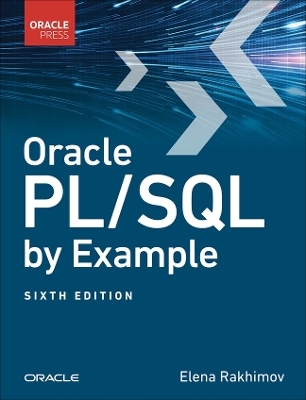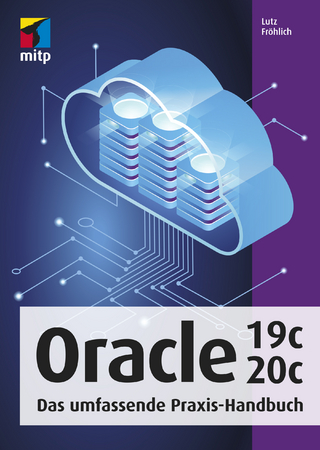
Oracle8 Design Tips
O'Reilly Media (Verlag)
978-1-56592-361-4 (ISBN)
- Titel ist leider vergriffen;
keine Neuauflage - Artikel merken
The latest version of the Oracle relational database management system, Oracle8, was released in the summer of 1997. The new version offers some dramatically different features from previous versions, including better scalability, reliability, and security; an object-relational model; additional datatypes; and much more. To get peak performance out of an Oracle8 system, databases and code need to be designed with these new features in mind. This small book tells Oracle designers and developers just what they need to know to use the Oracle8 features to best advantage. O'Reilly's Oracle Design, released in April 1997, has been very well received by the Oracle community. The design of both databases and applications is an often-neglected area of Oracle, but one that has an enormous impact on the ultimate power and performance of a system. If the initial design is poor, then the most powerful hardware, the most sophisticated software tools, and the most highly tuned data and programs won't make a system run smoothly and efficiently.
Oracle Design focuses on both database and code design, including such special design areas as data models, denormalization, the use of keys and indexes, temporal data, special architectures (client/server, distributed database, parallel processing), and data warehouses. Written primarily for Oracle7 (through 7.3), it also takes a look ahead at some of the features announced for Oracle8. Oracle8 Design Tips is a companion volume for Oracle Design. Written by Dave Ensor and Ian Stevenson, authors of the original volume, the mini-book focuses on the new features of Oracle8 and on the object-relational model of the new version. Virtually all of the advice in the original book is still absolutely on target (regardless of what version of Oracle you are running). But the mini-book updates that advice to tell you how to capitalize on the latest features. Used together, the two volumes provide immensely valuable and up-to-the-minute information for anyone trying to design for the latest version of the Oracle RDBMS. Chapters include: 1. What's New in Oracle8? An overview of Oracle8 and Oracle's approach. 2. Methodologies for Oracle8.
Can traditional methodologies be used for development in an object-oriented environment? What approaches are best for Oracle's new object-relational model? 3. Miscellaneous Oracle8 Enhancements. Discussions of a variety of new features, including triggers and backups. 4. Oracle8's "Big" Features. Design hints for using features that support very large databases, including large objects (LOBs), partitioned objects, indexes and tables, cooperative indexing, etc. 5. Objects. A general discussion of the object-oriented technology that underlies Oracle8--for example, how do such features as encapsulation, inheritance, and polymorphism apply in an Oracle environment? 6. Tools Support for Oracle8. The use of tools like Sedona, Developer/2000, Designer/2000, Object Designer, SQL*Plus, C/C++, and Java with Oracle8.
Dave Ensor is manager of Worldwide Solutions, PATROL R&D, with BMC Software where his roles are to assist customers in their use of both BMC's PATROL product and the Oracle Server, and to feed the results of his field work back into product planning. He has more than 30 years of IT experience and has been involved with the design and performance issues surrounding Oracle since 1987. For many years he led Oracle Worldwide's Performance Studies Group based in the UK, which provided consultancy support to both customer and internal projects with critical performance requirements. Dave is well known as a speaker on performance management and design; he presents his papers at user conferences and writes and delivers one-day seminars. He lives in the UK just outside London, but spends much of the year traveling to user sites and meetings. In his spare time he also travels, but in this case without his laptop and with his wife. He can be reached at dave_ensor@compuserve.com. Ian Stevenson is a freelance consultant specializing in database design and development. He has worked with database technology for 19 years, starting with early hierarchical models. He worked for Oracle (UK) for two years in post-sales support and Human Resources Development. This is where he formed his friendship with Dave Ensor. Ian has a first-class honors degree in mathematics from the University of Southampton and is a member of the British Computer Society. He is married to Brenda and has two children, Todd and Tara. He is a fanatic supporter of the Southampton football club. He can be contacted via ian@westmail.demon.co.uk.
Preface. 1. What's New in Oracle8? Oracle's Marketing Message Oracle8 Features Scalability Reliability Security More Manageable Data More Copies of Data More Ways to Represent Data Faster Access to Data Towards Object Orientation The Type System Object Views. 2. Methodologies for Oracle8 Oracle8 and Traditional Methods Oracle8 and OOAD Component-Based Development Bottom-Up or Top-Down Development. 3. Miscellaneous Oracle8 Enhancements INSTEAD OF Triggers How INSTEAD OF Triggers Work A Trigger Example The Role of INSTEAD OF Triggers PL/SQL Improvements 3GL Callouts Restrictions on 3GL Callouts Example of a 3GL Callout Deferred Constraint Checking ENFORCE Option Safeguarding Data DB_VERIFY Utility Recovery Manager Utility Using the Recovery Catalog Recovery Manager features. 4. Oracle8's "Big" Features What Is a Really Big Database? Partitioned Objects Partitioned Tables Declarative partitioning Selecting a partition strategy Date-based partitioning Using partitions explicitly Determining the partition key Partitioned Indexes Unusable index partitions Locally prefixed partitions Locally non-prefixed partitions Global partitions Index-Only Tables Reversed Key Indexes Unstructured Data and LOBs Long and Unstructured Data in Oracle7 Introducing LOBs Design Considerations BFILE or LOB Recoverability and consistency Multiple LOBs Using LOBs in cartridges Primary key indexes Piecewise operations Supporting Large Populations of Users Connection Sharing User Identification Bitmap Indexes Cooperative Indexing NOLOGGING Option APPEND Hint Direct-Path Inserts. 5. Objects Introducing ORDBMS Pick Your Analogy Carefully Arguments For and Against Decomposition The Role of the LOB Interfaces Client-side Cache The Type System Reference Pointers (REFs) Abstract Data Types (ADTs) Methods MAP function ORDER function Collections VARRAYs Nested Tables Which Collection Type? Object Views Looking Ahead. 6. Tool Support for Oracle8 Sedona Developer/2000 Designer/2000 Object Designer SQL*Plus PL/SQL C, C++, and OCI Approaches to Extracting the Data Reasons to Use OCI Java Other Tools Conclusion.
| Erscheint lt. Verlag | 7.10.1997 |
|---|---|
| Reihe/Serie | A Nutshell handbook |
| Zusatzinfo | illustrations |
| Verlagsort | Sebastopol |
| Sprache | englisch |
| Maße | 152 x 228 mm |
| Gewicht | 230 g |
| Einbandart | kartoniert |
| Themenwelt | Informatik ► Datenbanken ► Oracle |
| ISBN-10 | 1-56592-361-8 / 1565923618 |
| ISBN-13 | 978-1-56592-361-4 / 9781565923614 |
| Zustand | Neuware |
| Haben Sie eine Frage zum Produkt? |
aus dem Bereich


